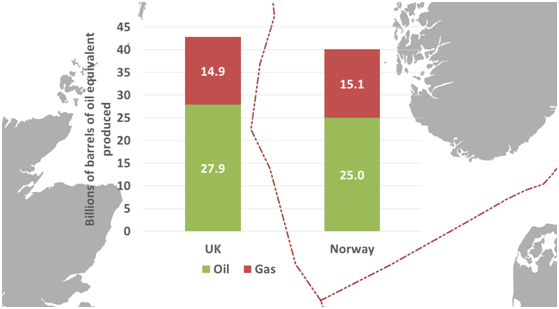Despite cost controls, increased efficiency, and higher activity offshore Norway, oil production at Western Europe’s largest oil producer fell in 2018 compared to 2017 and is further expected to drop this year to its lowest level since 1988....MORE
Last year, oil production in Norway fell to 1.49 million barrels per day (bpd), down by 6.3 percent compared to the 1.59 million bpd production in 2017, the oil industry regulator, the Norwegian Petroleum Directorate (NPD), said in its annual report this week. Oil production this year is forecast to drop by another 4.7 percent from last year to reach in 2019 its lowest level in thirty years—1.42 million bpd, the NPD estimates show.
As bad as it sounds, this year’s expected low production is not the worst news for the Norwegian Continental Shelf (NCS) going forward.
Oil production is expected to jump in 2020 through 2023, thanks to the start up in late 2019 of Johan Sverdrup—the North Sea giant, as operator Equinor calls it. With expected resources of 2.1 billion—3.1 billion barrels of oil equivalent, Johan Sverdrup is one of the largest discoveries on the NCS ever made. It will be one of the most important industrial projects in Norway in the next 50 years, and at its peak, the project's production will account for 25 percent of Norway’s total oil production, Equinor says.
The worst news for Norway’s oil production, as things stand now, is that after Johan Sverdrup and after Johan Castberg in the Barents Sea scheduled for first oil in 2022, Norway doesn’t have major oil discoveries and projects to sustain its oil production after the middle of the 2020s.
The NPD started warning last year that from the mid-2020s onward, production offshore Norway will start to decline “so making new and large discoveries quickly is necessary for maintaining production at the same level from the mid-2020s.”
In the report this week, NPD Director General Bente Nyland said:
“The high level of exploration activity proves that the Norwegian Shelf is attractive. That is good news! However, resource growth at this level is not sufficient to maintain a high level of production after 2025. Therefore, more profitable resources must be proven, and the clock is ticking”....
However, here's the difference between Norway and the U.K.:
Since the early 1970s Norway and the UK pumped very similar quantities of oil and gas out of the North Sea, the return from this national natural resource for tax-payers was very different!That's Columbia Uni's Adam Tooze who came to us by way of a retweet from FT Alphaville's Colby Smith.
Professor Tooze was pointing to the Natural Resource Governance Institute who focus on extractive industry policy and advocacy, usually in less developed economies. More specifically, Prof Tooze was referencing:
5 October 2015
